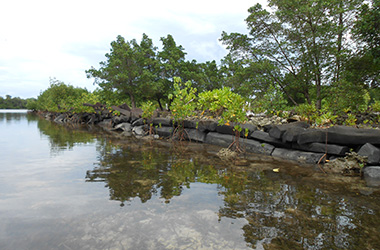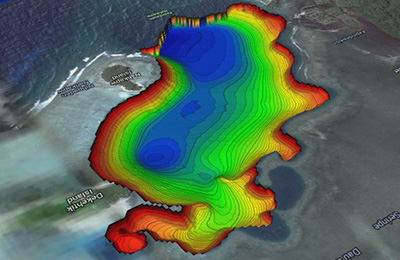The Nan Madol ruins are located off the coast of Pohnpei Island in the Federated States of Micronesia. The site consists of 95 artificial islands of various sizes, built from basalt and other materials, scattered over an area of approximately 1.5 x 0.7 km. According to archaeological studies, the construction of the artificial islands began around the year 500 AD. A network of canals runs between the islands, and it is believed that people used canoes to travel between them via these waterways. The Nan Madol ruins serve as evidence of a grand ancient dynasty that once existed on Pohnpei Island and remain a sacred place for the local inhabitants to this day.

Underwater Archaeological Survey
In February 2013, a team consisting of the Nara National Research Institute for Cultural Properties, the University of Tokyo, and the Japan Consortium for International Cooperation in Cultural Heritage conducted an underwater archaeological investigation at the Nan Madol site, located on Pohnpei Island, the capital of the Federated States of Micronesia. The team created a 3D detailed underwater topographic map using a sonar depth finder, captured underwater images with a robotic camera, and performed a rock survey through scuba diving. These data will serve as foundational materials for future research on Nan Madol.
Additionally, although the Nan Madol ruins were registered as a UNESCO World Heritage site in 2016, they were also listed on the list of World Heritage in Danger.



Nad Madol Ruins
Findings Presented at the Asia-Pacific Conference on Underwater Cultural Heritage
In May 2014, the “Asia-Pacific Conference on Underwater Cultural Heritage,” where scholars involved in underwater archaeology presented their latest research findings, was held at the University of Hawaii in Honolulu. Together with Dr. Hiroshi Ishimura from the Nara National Research Institute for Cultural Properties, who led the investigation, results of the research were presented.


